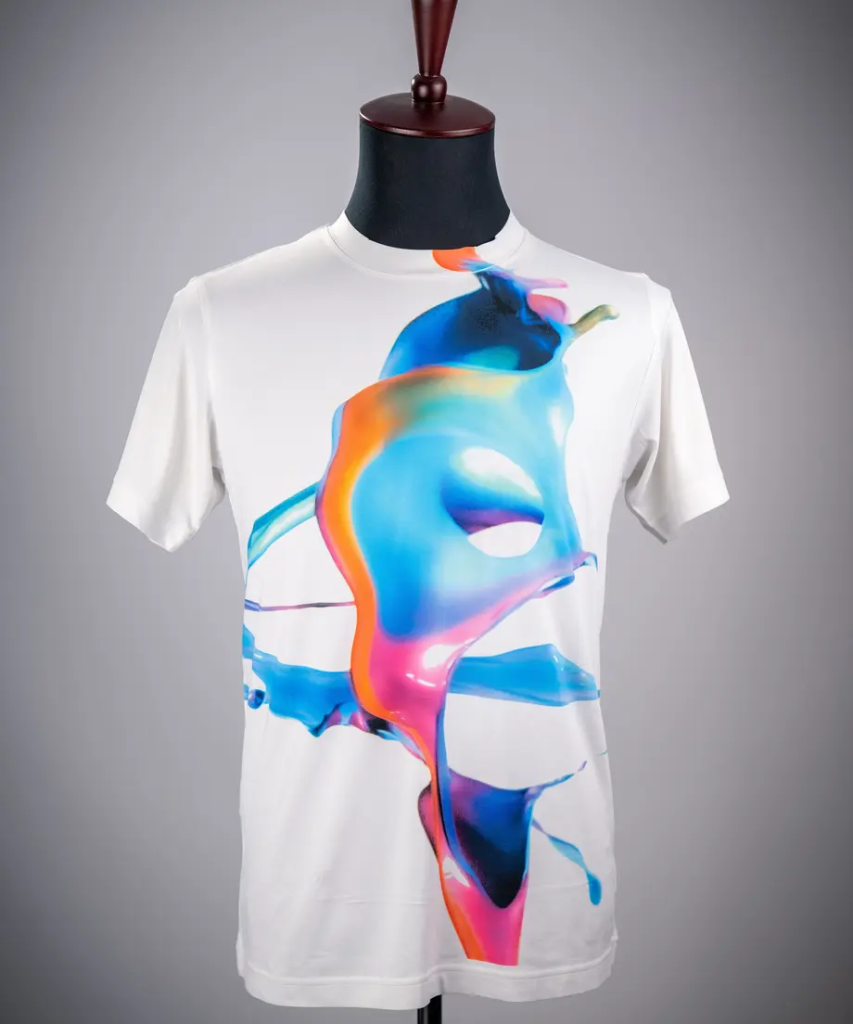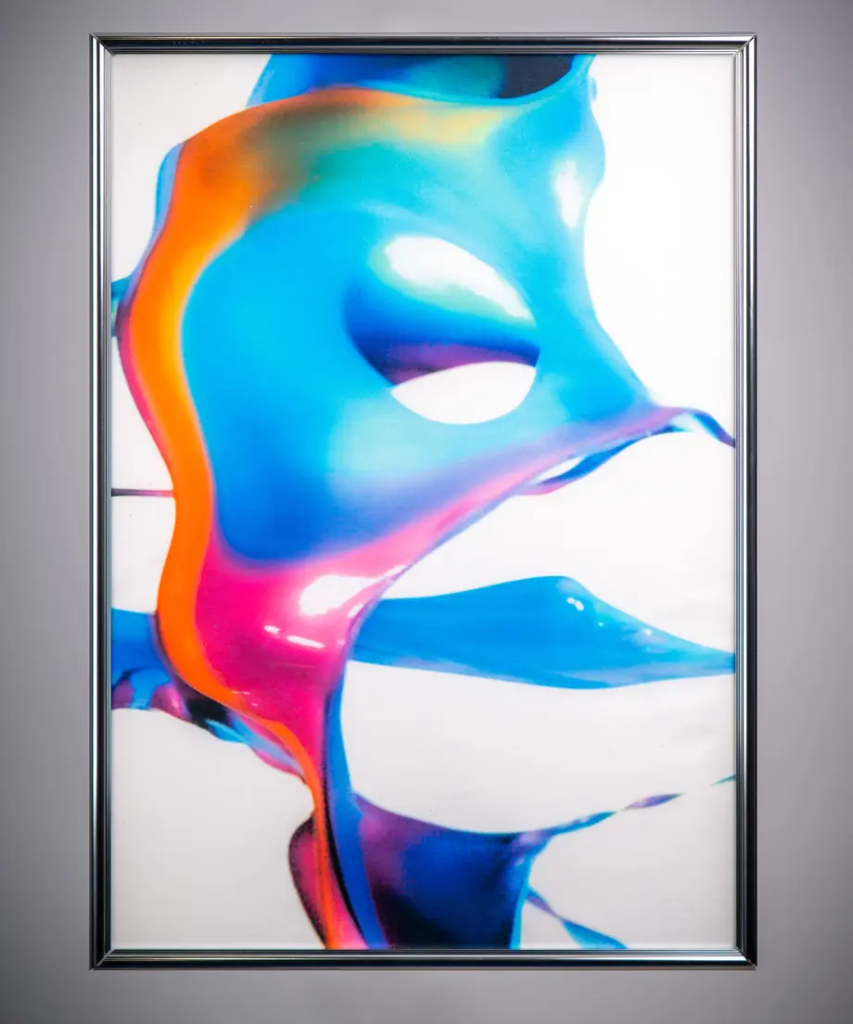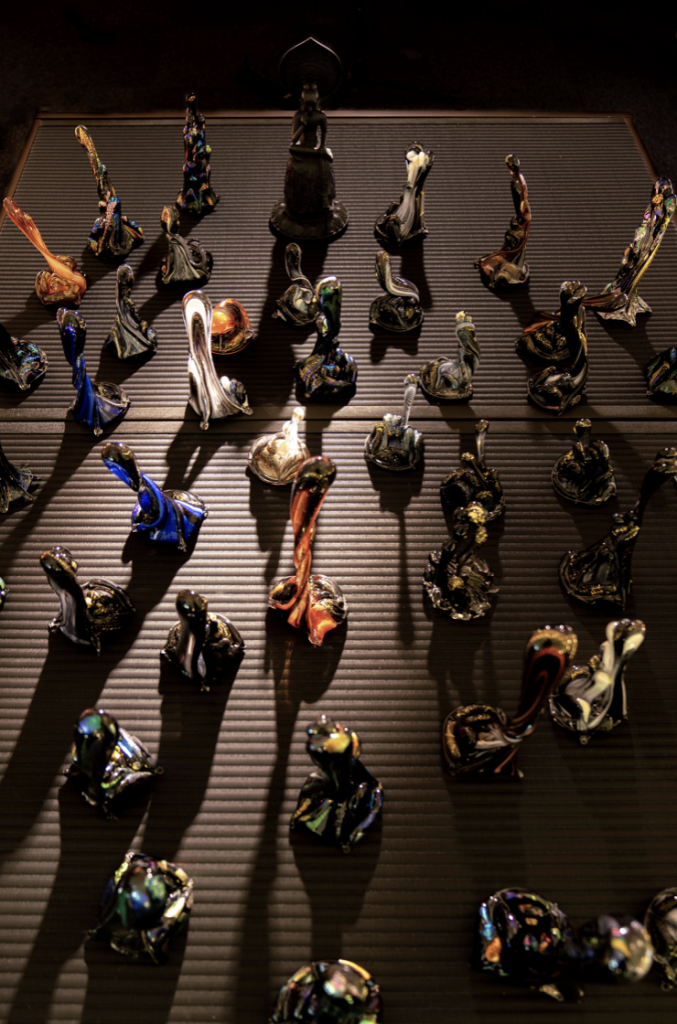- Place: J-COLLABO, Brooklyn, New York ( https://www.j-collabo.org/ )
- Virtual exhibition Oncyber
About the Exhibition
Naoko Tosa started her career as a video artist and has been creating various genres of art, such as interactive and photo art. Her activities as an artist are not limited to one art genre but are also characterized as a cross-border artist who freely moves between multiple genres. At the same time. underlying her artistic production is her desire to express Japanese cultural content using the latest technology under “Cultural Computing.” She has been inspired by various traditional Japanese artworks and art genres and has been trying to express Japanese beauty by combining her sensitivity and technology.
Her art has a solid connection to New York. Her early video artwork “An Expression” is in the MoMA collection. Also, her representative video art “Sound of Ikebana” was shown at Times Square using more than sixty digital billboards in April 2017 as an event called “Midnight Moment.”
Tosa has recently been working on extracting and expressing hidden beauty in natural phenomena using a high-speed camera. She has been producing video art represented by “Sound of Ikebana.” A high-speed camera can stretch the time, creating a unique expression that gives people the feeling of weightlessness. At the same time, she is challenging art creation under actual weightless using parabolic flight.
She also challenges how to materialize her two-dimensional video artwork represented by the Sound of Ikebana into three-dimensional artworks from multiple perspectives. For example, she makes the Sound of Ikebana made of liquid phenomena into three-dimensional glass art. She also challenges to map her art images onto a three-dimensional torso. This is an attempt to make her artwork into a three-dimensional form of clothing, which may become a new form of artistic expression.
As mentioned earlier, the act of extending time exists at the root of these attempts. This also means being released from gravity and is why this exhibition is titled “Zero Gravity Art.” We hope that people living under various restrictions will appreciate this exhibition and feel a sense of liberation from those restrictions and problems.
Brief Introduction of Exhibition Items
(1) Video art: “Sound of Ikebana” (2014)

This is Naoko Tosa’s representative video art. By applying sound vibrations to viscous fluids such as paints, she filmed with a high-speed camera how the fluids were released from gravity and jumped up. Based on the natural phenomenon of jumping fluid, she captured and visualized the beauty of nature using high-speed camera technology and created video art by editing the captured videos based on her sensibility. The technique of extracting and expressing the beauty hidden in nature has something in common with traditional Japanese art production methods. For this reason, many people feel Japanese beauty in this work.
(2) An art-fashion installation in which “Sound of Ikebana” is printed on fabric and turned into art fashion. (2021).




Is it possible to substantiate various artworks represented by the Sound of Ikebana under one concept? With this in mind, Tosa created a fashion installation that summarizes the entire exhibition. A new method of artistic expression that turns art into fashion by printing images of Tosa’s artworks, including the Sound of Ikebana, on fabric and making them into clothes. By wearing the clothes, the energy and spirituality of art are directly integrated with the human body, creating a new art expression method of “wearing art.”
(3) Video art collections
“Wind God and Thunder God” (2015)

The god of wind and the god of thunder is thought to express the wonders of nature.
“Space Jungle” and “Moon Flower” (2014)

These video artworks were created by shooting flowers frozen in liquid nitrogen with an air gun and letting the flowers scatter. As this phenomenon does not occur naturally, it gives the impression that it happens at a mysterious place somewhere in the universe. These artworks were created based on this impression and are reminiscent of a mysterious flower garden in the weightless universe.
“Zero Gravity Sound of Ikebana” (2021)

What if the Sound of Ikebana is created under zero gravity? From such a naïve question, Tosa made the Sound of Ikebana under microgravity realized by parabolic flight. Initially, we expected that the paint would become spherical. But contrary to expectations, the Zero Gravity Sound of Ikebana has shapes that resemble the Sound of Ikebana under normal gravity but has a more straightforward and more beautiful form.
“Sound of Ikebana by the birth cry” (2020)

The Sound of Ikebana can create new shapes by using various sounds as sound sources. This is the Sound of Ikebana created using the “birth cry” of a newborn baby. Babies are born into the world after spending time in weightless amniotic fluid. The birth cry of newborn babies can be heard as if they have decided to live under gravity by leaving the comfortable situation in weightless amniotic fluid.
https://www.instagram.com/ubugoe_by_sound_of_ikebana/
(4) Photo art collections
“San-Shui on the clouds” (2012)

This artwork expresses the Shangri-La above the clouds using the traditional oriental perspective “San-en,” created from many photographs of clouds.
“Silence” (2012)

This artwork expresses Zen’s state, where the tree that has endured the wind and snow in the Zen temple in Kyoto is released from gravity and becomes free.
“Shan-Shui in the universe” (2012)

This artwork was created based on the rock garden of the Taizo-in in Myoshinji Temple, Kyoto. It is an image of Shan-Shui released from gravity and exists in the universe as the Shangri-La.
“Energy” (2012)


This artwork expresses the energy Tosa felt in various Asian cultures. She created the artwork using the images of multiple amulets she met in energetic Asia and fire, which is the source of power.
(5) “Miroku and his pupil”: an installation of glass artworks (2022)

To make the Sound of Ikebana three-dimensional, she created various glass artworks. While the Sound of Ikebana is created from a fluid released from gravity and jumping up, Tosa created the glass artwork by letting melted glass hang down due to gravity. The created artworks have a shape that resembles the Sound of Ikebana. Coincidentally, this process is similar to Gaudi’s design process of the Sagrada Familia, in which he uses many hanging sandbags to design the shape of the spire that extends into the sky.
By arranging the created glass artworks, people feel like they are humans looking for something. When a statue of Miroku (Maitreya Bodhisattva) was placed there, an installation was born that shows Miroku teaching his principle to his students and hearing their voices.
(6) Naoko Tosa Art Book “Looking for Japan” (2016)

